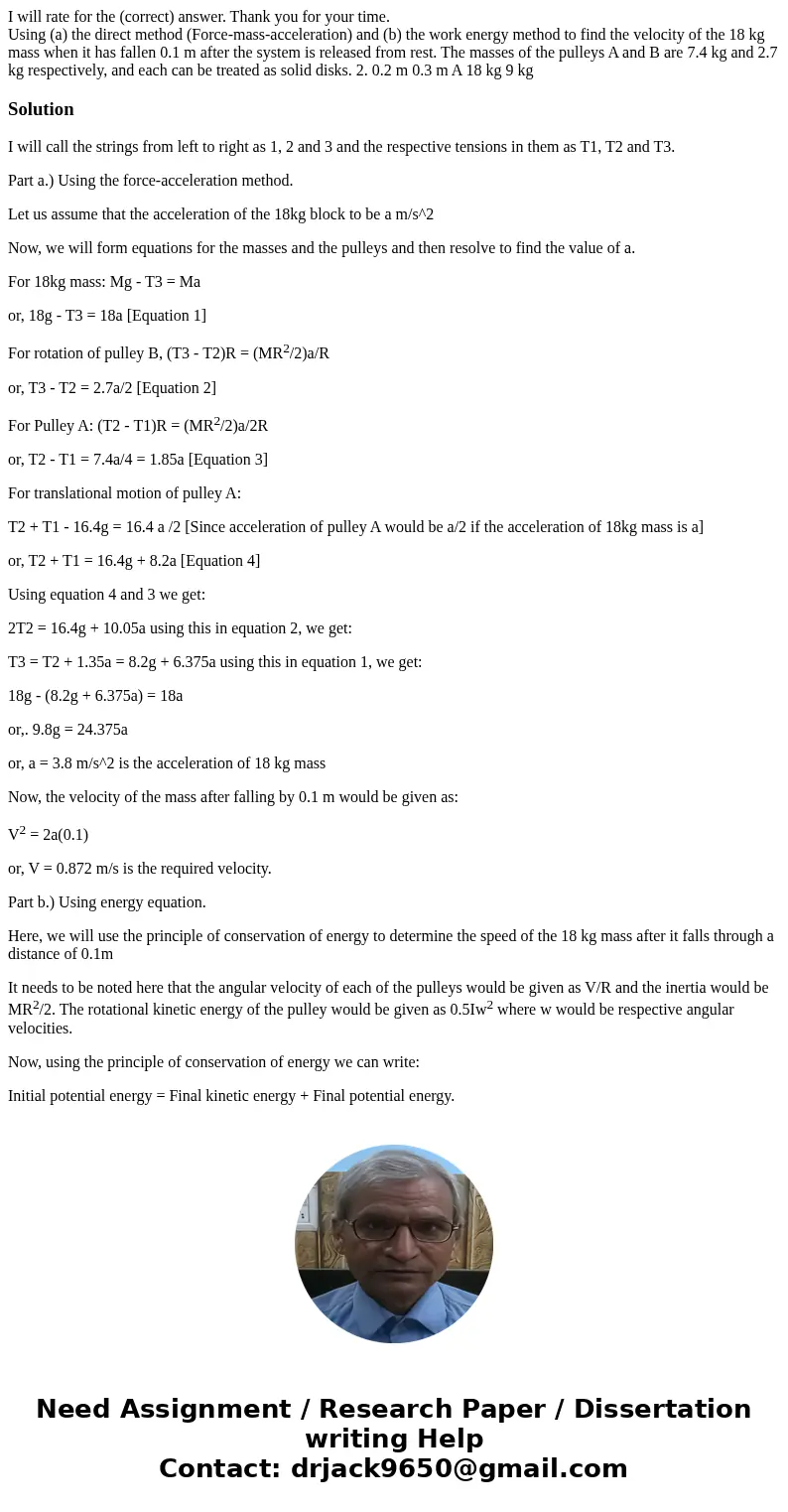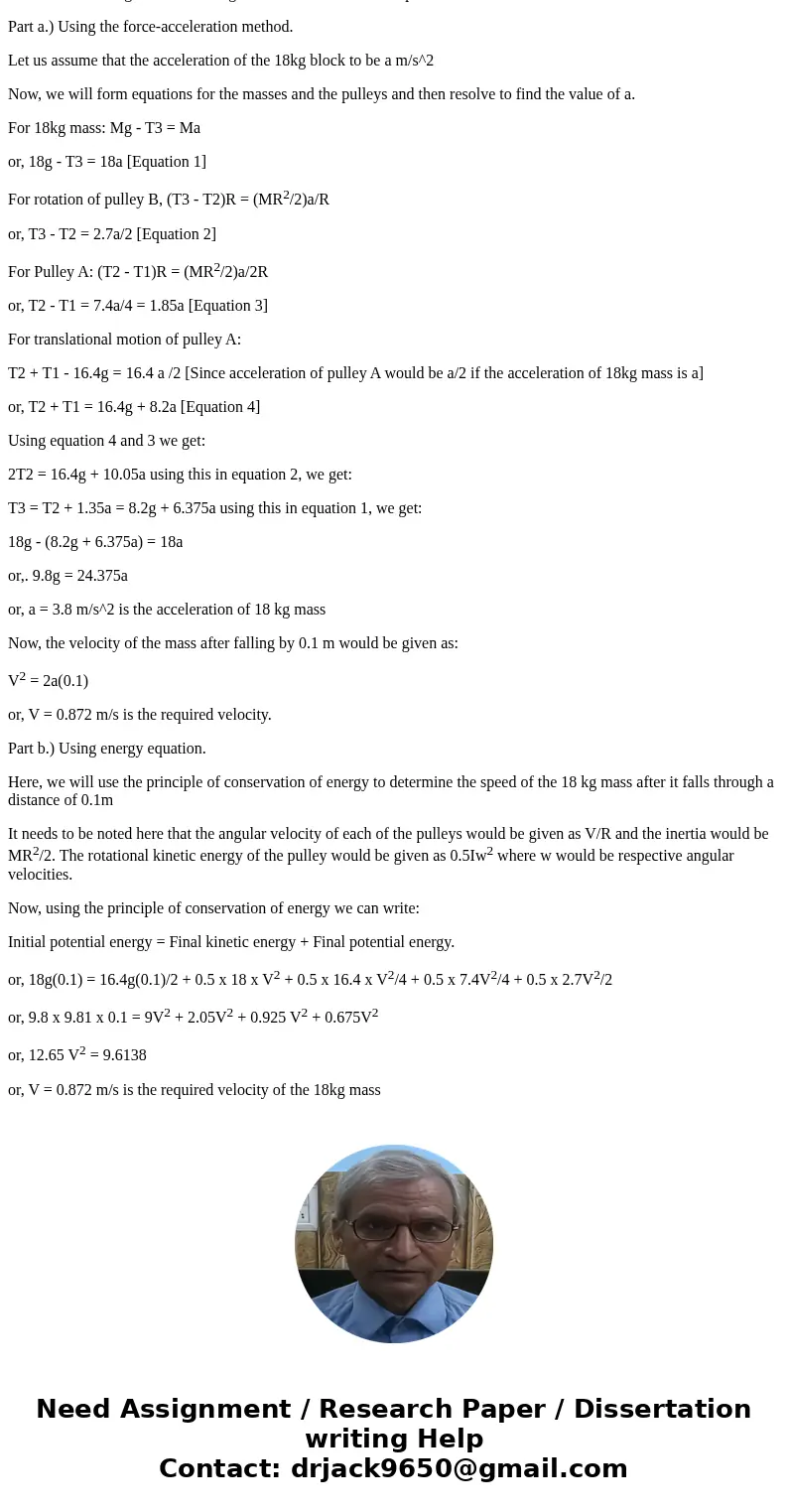I will rate for the correct answer Thank you for your time U
Solution
I will call the strings from left to right as 1, 2 and 3 and the respective tensions in them as T1, T2 and T3.
Part a.) Using the force-acceleration method.
Let us assume that the acceleration of the 18kg block to be a m/s^2
Now, we will form equations for the masses and the pulleys and then resolve to find the value of a.
For 18kg mass: Mg - T3 = Ma
or, 18g - T3 = 18a [Equation 1]
For rotation of pulley B, (T3 - T2)R = (MR2/2)a/R
or, T3 - T2 = 2.7a/2 [Equation 2]
For Pulley A: (T2 - T1)R = (MR2/2)a/2R
or, T2 - T1 = 7.4a/4 = 1.85a [Equation 3]
For translational motion of pulley A:
T2 + T1 - 16.4g = 16.4 a /2 [Since acceleration of pulley A would be a/2 if the acceleration of 18kg mass is a]
or, T2 + T1 = 16.4g + 8.2a [Equation 4]
Using equation 4 and 3 we get:
2T2 = 16.4g + 10.05a using this in equation 2, we get:
T3 = T2 + 1.35a = 8.2g + 6.375a using this in equation 1, we get:
18g - (8.2g + 6.375a) = 18a
or,. 9.8g = 24.375a
or, a = 3.8 m/s^2 is the acceleration of 18 kg mass
Now, the velocity of the mass after falling by 0.1 m would be given as:
V2 = 2a(0.1)
or, V = 0.872 m/s is the required velocity.
Part b.) Using energy equation.
Here, we will use the principle of conservation of energy to determine the speed of the 18 kg mass after it falls through a distance of 0.1m
It needs to be noted here that the angular velocity of each of the pulleys would be given as V/R and the inertia would be MR2/2. The rotational kinetic energy of the pulley would be given as 0.5Iw2 where w would be respective angular velocities.
Now, using the principle of conservation of energy we can write:
Initial potential energy = Final kinetic energy + Final potential energy.
or, 18g(0.1) = 16.4g(0.1)/2 + 0.5 x 18 x V2 + 0.5 x 16.4 x V2/4 + 0.5 x 7.4V2/4 + 0.5 x 2.7V2/2
or, 9.8 x 9.81 x 0.1 = 9V2 + 2.05V2 + 0.925 V2 + 0.675V2
or, 12.65 V2 = 9.6138
or, V = 0.872 m/s is the required velocity of the 18kg mass


 Homework Sourse
Homework Sourse